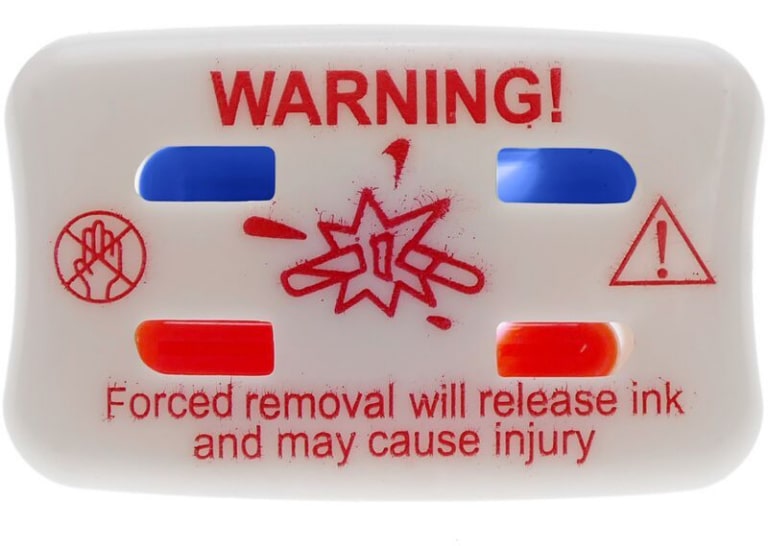Has your business experienced retail shrinkage? That annoying occurrence when there are fewer items in stock at the store than in the inventory books? A variety of factors may lead to this, but the most common one is shoplifting. Different types of security tags can save you a lot of money, but first, let’s see what they are.
What Are Security Tags?
It might come as a surprise, but security tags have been around for a long time, since the 1960s. You have probably seen them attached to many different products, such as clothing, eyewear, liquor, etc. They’re usually plastic, light, and vary in shapes and sizes.
What Are Tags For?
If you’re a retailer, security tags are there to make your life easier. Once you put a security tag on an item, the said item cannot be used (or sometimes even taken off the shelf) before the tag comes off.
Thanks to their design, it’s impossible to remove them from products without the necessary tools. Ideally, only authorized personnel will be able to do so, which is how security tags make shoplifting quite tricky and work to your advantage.
4 Main Types of Security Tags
1. Benefit Denial

Image source: Pinterest
Benefit denial tags, like the name suggests, deny the benefit to the thief. They will effectively destroy the stolen goods if you don’t remove the tag correctly.
These tags can destroy products in various ways, and one that most people know of is the ink tag. Once an unauthorized person tries to remove the tag, it will release permanent ink, rendering the item unusable.
Another tag in this category destroys DVDs and CDs if tampered with. There are also special tags for bottles that one can remove only if they use a specific key. You can also choose tags with an extremely strong adhesive that will ruin the aesthetic of the stolen item.
Some retailers choose to pair benefit denial tags with EAS security tags just for that additional layer of protection.
2. EAS Tags

EAS tags are the most widely used tags in retail. Their technology isn’t new, but it has been tried and tested, which is precisely why it’s still around.
These tags have a hard casing, inside of which there’s a small transmitter. Its task is to keep undisrupted communication with the antenna positioned at the entrance of the shop. Once the EAS tag gets too close to the antenna, an alarm will go off, thus alerting the personnel about potential theft.
3. Visual Tags

Visual tags look just like the EAS tags we’ve discussed, but unlike them, these do not have a transmitter inside the casing. Therefore, keep in mind that they cannot communicate with the antenna or alert your staff. As the name suggests, they’re only a visual deterrent to a potential thief.
Visual tags come in various shapes and sizes in order to fit different items. And since they don’t require installing the EAS security system, small retailers often opt for them to keep costs low.
4. Lanyards and Labels

Lanyards and labels are another budget-friendly option to consider if you don’t want to make a big investment. However, there’s a downside to labels — you won’t be able to reuse them, unlike the different types of security tags we’ve mentioned above. Still, lanyards and labels are just as useful, since they also require the store personnel to deactivate them to prevent the alarm from going off.
There are different kinds of security lanyards and labels, with and without a barcode. Retailers will often put them on items made of delicate fabric, as they won’t cause any damage to it.
How to Remove Security Tags
Once you decide to invest in any of the different types of security tags, you will receive all the equipment, including the tools for safely removing them. It’s essential to train your staff on how to remove security tags. Should they fail to do so properly, the tags will damage the items, and you’ll need to reimburse your customer.
Our advice to customers who come home to realize that the items they bought still have tags on them is to return to the store and ask the personnel to remove them. This applies even to people who are big fans of DIY, because the tags are meant to come off using the technology made for them, not with various hacks one may find online.